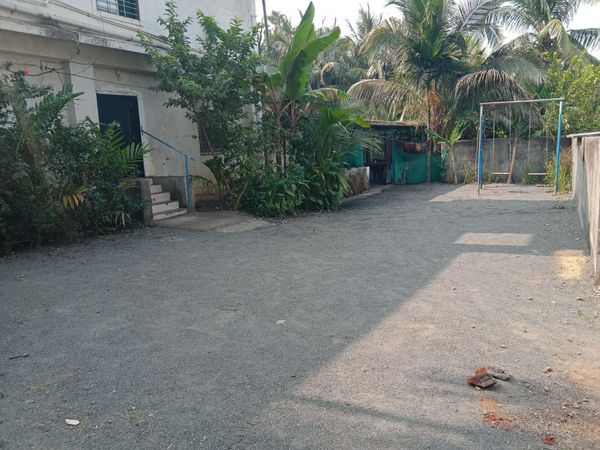Into the Wild: Discover the Thrill of Jhalana Leopard Safari
 Palakshi Meharwal
23 Jul, 2025
9 mins read
41
Palakshi Meharwal
23 Jul, 2025
9 mins read
41

Nestled on the outskirts of Jaipur, Rajasthan, the Jhalana Leopard Safari offers wildlife enthusiasts a unique opportunity to experience the wild in a setting that's both intimate and thrilling. Often referred to as Jaipur’s very own leopard reserve, this protected forest area spans approximately 20 square kilometers and is home to a flourishing population of leopards and other exotic species. For those looking to venture beyond traditional tourist paths, the Jhalana Safari is a gateway into nature’s untamed beauty, revealing an ecosystem that's rich, diverse, and surprisingly accessible.
The Legacy and Landscape of Jhalana
The Jhalana Forest Reserve, once a hunting ground for Jaipur’s royal families, has evolved into a significant conservation hub in Rajasthan. Since being declared a leopard reserve in 2017, the park has gained recognition for its proactive wildlife management and the increasing frequency of leopard sightings, a rare feat for any sanctuary located near an urban sprawl.
Set against the backdrop of the Aravalli Hills, the landscape is dotted with dry deciduous forests, scrublands, and rocky outcrops—perfect camouflage for its resident predators. The vegetation here comprises dhok trees, babool, and kikar, providing cover and sustenance to a variety of animals.
Why Jhalana Stands Out Among Indian Wildlife Safaris
Unlike the more expansive national parks like Ranthambore or Jim Corbett, Jhalana Leopard Safari is known for its close encounters with wildlife—particularly the elusive leopard. This proximity makes it a standout destination for photographers, naturalists, and those short on time yet craving authentic wilderness experiences.
One of the most compelling aspects of this park is its remarkable leopard density. According to forest officials, Jhalana houses more than 30 leopards within its relatively compact area. This makes the chances of sighting a leopard notably high compared to other parks in the country. Moreover, since the park doesn’t allow private vehicles, visitors must book safaris through authorized forest operators, ensuring minimal disturbance to the habitat.
Flora and Fauna: More Than Just Leopards
While the leopards are undoubtedly the stars of the show, Jhalana’s biodiversity extends well beyond them. Birdwatchers are treated to an avian paradise with over 150 recorded bird species including the Indian pitta, crested serpent eagle, peafowl, and various migratory birds during winter.
Other mammals like desert foxes, hyenas, striped palm squirrels, and jungle cats also roam the reserve. Reptile sightings, including Indian cobras and monitor lizards, further enhance the area’s ecological appeal. This diversity makes the Jhalana Leopard Safari a compact yet comprehensive introduction to India’s dry forest ecosystems.
Best Time to Visit and Safari Timings
The reserve is open year-round, but the ideal time for wildlife viewing is from October to March when the weather is pleasant and animal activity is higher. Summer months (April to June) also provide excellent opportunities for sightings, especially near water holes, though temperatures can soar beyond 40°C.
Safari slots are available twice daily:
- Morning Safari: 6:45 AM to 9:30 AM
- Evening Safari: 3:30 PM to 6:15 PM
Each safari lasts approximately 2.5 to 3 hours and takes place in a 6-seater open gypsy vehicle, accompanied by trained drivers and forest guides.
Booking and Accessibility
Booking for the safari can be made online through the official Rajasthan Forest Department website or via reputable travel partners. It’s advisable to book in advance, especially during peak tourist seasons, as slots are limited.
Located just 10 kilometers from central Jaipur, Jhalana is easily accessible by car or public transport. Its proximity to Jaipur International Airport and major railway stations makes it a convenient addition to any Rajasthan itinerary.
Sustainable Tourism and Conservation
Jhalana is a model example of urban wildlife conservation, balancing ecological preservation with tourism. The park’s restricted visitor numbers, regulated safari timings, and trained naturalists play a crucial role in minimizing human impact while maximizing educational value.
Additionally, the reserve is involved in ongoing conservation efforts, such as afforestation programs and habitat restoration. Eco-tourism here supports local employment and contributes directly to the region's conservation funds—highlighting the importance of responsible travel.
Tips for a Memorable Safari Experience
To make the most of your Jhalana Leopard Safari, consider the following:
- Dress appropriately: Opt for earthy colors like olive, brown, or beige to blend into the environment. Avoid bright clothing or strong perfumes.
- Carry binoculars and a camera: The compact terrain allows for excellent photography opportunities, so be safari-ready.
- Listen to your guide: Forest guides possess deep knowledge of the reserve’s topography and animal behavior. Their insight often leads to rewarding encounters.
- Book morning safaris: Early morning hours often yield better chances of spotting leopards and other wildlife.
Jhalana: A Hidden Gem for Wildlife Lovers
Often overshadowed by its more famous counterparts, Jhalana is slowly emerging as a must-visit wildlife destination in Rajasthan. It combines the allure of wilderness with the convenience of urban proximity, making it an ideal choice for weekend travelers, family trips, and eco-tourists.
Whether you're a seasoned wildlife photographer or a first-time visitor curious about India's fauna, Jhalana delivers a rich, authentic experience that is both accessible and unforgettable.
Conclusion
The Jhalana Leopard Safari is more than just a wildlife tour—it’s an immersive journey into a thriving natural world hidden in the heart of an otherwise bustling city. With its dense leopard population, varied flora and fauna, and conservation-forward approach, the reserve stands as a testament to India’s commitment to protecting its wild heritage. So the next time you're in Jaipur, trade the forts and palaces for a thrilling ride into the wild—you might just spot a leopard staring right back at you.
Written By:
Palakshi Meharwal



Hotels at your convenience
Now choose your stay according to your preference. From finding a place for your dream destination or a mere weekend getaway to business accommodations or brief stay, we have got you covered. Explore hotels as per your mood.





